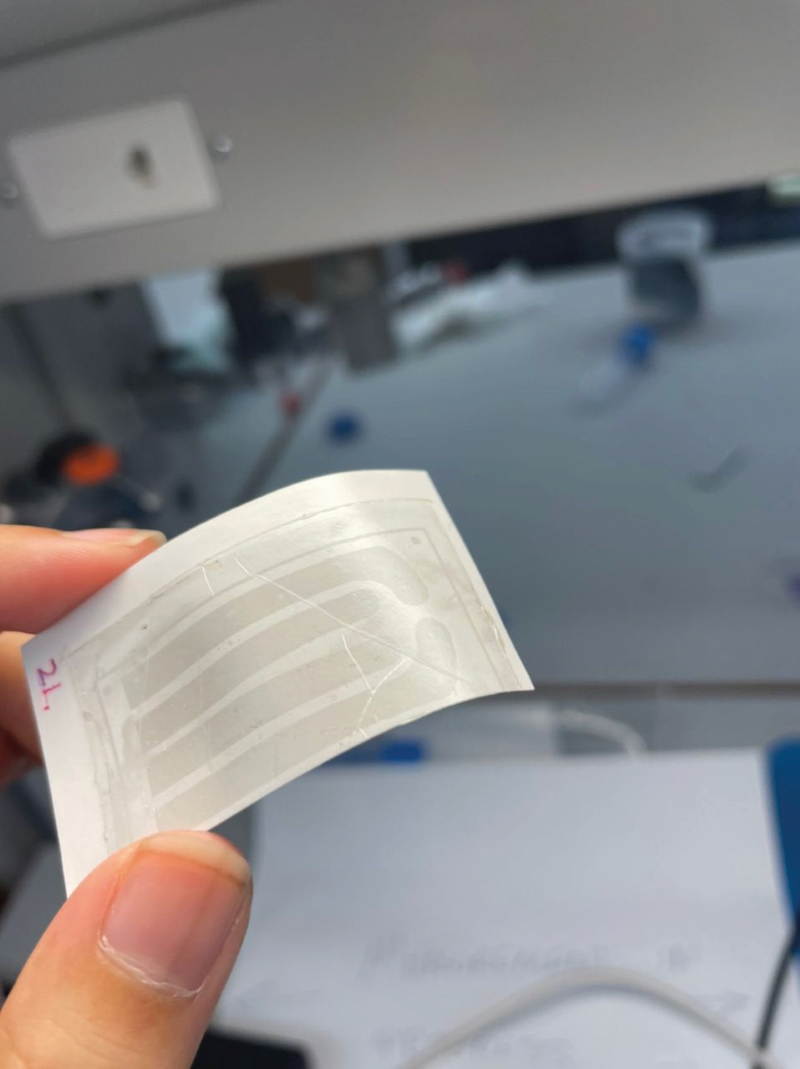Graphene ‘tattoo’ for the heart
The first cardiac implant made from graphene has been developed, say researchers led by Northwestern University and the University of Texas at Austin, USA.

In a test on small animal models, the graphene tattoo is reported to sense irregular heartbeats and deliver electrical stimulation to correct the rhythm.
Similar in appearance to a child’s temporary tattoo, the new graphene ‘tattoo’ implant is thinner than a single strand of hair, yet still functions like a classical pacemaker with improved conformability to soft, moving tissues and superior electrical and optical properties, say the scientists behind it.
Igor Efimov, Professor of Biomedical Engineering at Northwestern University, says, 'This device has a graphene interface that is in contact with the heart muscle. Graphene is connected to the electronics front-end via a gold foil interconnect. Electronics control both electrical stimulation and sensing.'
Efimov continues, 'This pacemaker works similarly to a regular pacemaker, except the interface is made of flexible and optically transparent graphene instead of metal alloys.' It allows researchers to record and stimulate the heart with optical light using optogenetics.
First, they encapsulated the graphene inside a flexible, elastic silicone membrane – with a hole punched in it to give access to the interior graphene electrode. Then, they placed gold tape with a thickness of 10µm onto the encapsulating layer to serve as an electrical interconnect between the graphene and the external electronics used to measure and stimulate the heart. Finally, they placed it onto the heart. The entire thickness of all layers together measures about 100µm in total.
The resulting device is found to be stable for 60 days on an actively beating heart at body temperature, which is comparable to the duration of temporary pacemakers used as bridges to permanent pacemakers or for rhythm management after surgery or other therapies.
The researchers suggest this is the thinnest cardiac implant to date. Efimov qualifies, 'Graphene itself is one-atom thick – it is the thinnest material known to man. Device thickness depends on the thickness of encapsulation materials and can be made tens or hundreds of micrometres thick, depending on functionality.'
After implanting the device into a rat model, the researchers have demonstrated that the graphene tattoo can sense irregular heart rhythms and then deliver electrical stimulation through a series of pulses without constraining or altering the heart’s natural motions. Leveraging the device’s transparent nature, Efimov and his team has performed optocardiography – using light to track and modulate heart rhythm – in the animal study.
Efimov states, 'Safety remains to be established in future long-term studies in humans. But graphene is a carbon material, which has been shown in other studies to be safe if one uses a safe fabrication process.'
They say the main potential application is to develop high-resolution, electronic, bio-interfaces, which will allow the study and treatment of cardiac arrhythmias and heart failure.
The next step is development of a fully implantable, high-resolution version of the device for testing in large animals before human testing.







